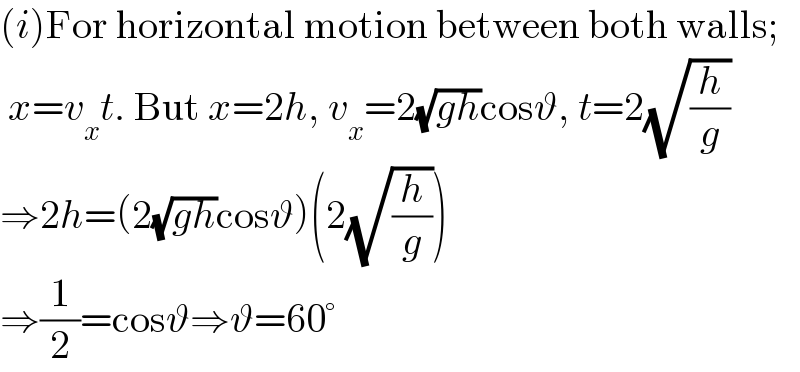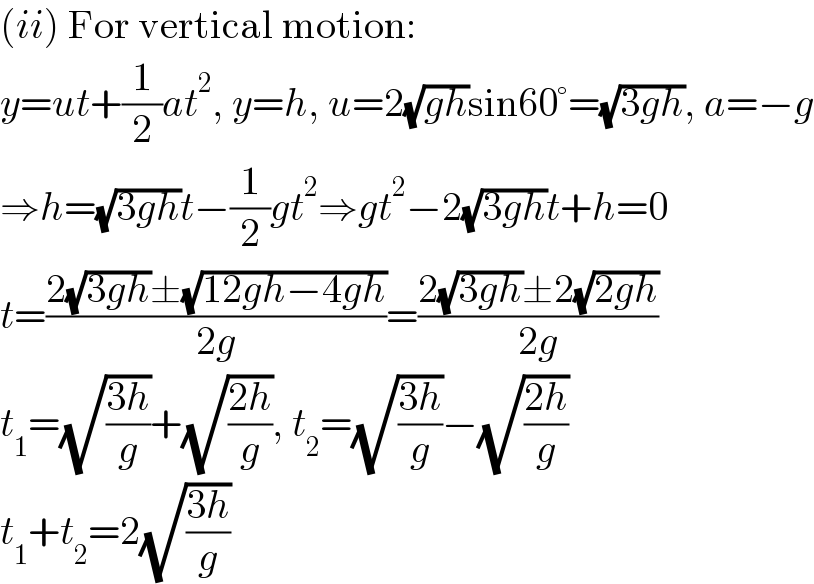
Question and Answers Forum
Question Number 154549 by peter frank last updated on 19/Sep/21

Commented by Tawa11 last updated on 21/Sep/21

Answered by ARUNG_Brandon_MBU last updated on 19/Sep/21

Commented by peter frank last updated on 20/Sep/21

Answered by ARUNG_Brandon_MBU last updated on 19/Sep/21

Answered by peter frank last updated on 20/Sep/21

Answered by peter frank last updated on 20/Sep/21
![x−direction x_1 =v_o cos θt_1 x_2 =v_o cos θt_2 v_o =2(√(gh)) x_2 −x_1 =2h (t_2 −t_1 )=2(√(h/g)) v_o cos θ(t_2 −t_1 )=2h cosθ=((2h)/(v_o (t_2 −t_1 ))) =(1/2) θ= cos^(−1) (1/2)=60^° also y−direction y=v_o sin θt_1 −(1/2)gt_1 ^2 y=v_o sin θt_2 −(1/2)gt_2 ^2 v_o sin θt_1 −(1/2)gt_1 ^2 =v_o sin θt_2 −(1/2)gt_2 ^2 2(√(gh)) sin θ(t_2 −t_1 )=(1/2)g(t_2 ^2 −t_1 ^2 ) 2(√(gh)) sin θ=(1/2)g(t_2 +t_1 ) [θ=60] t_2 +t_1 =((4(√(gh)))/g).((√3)/2)= t_2 +t_1 =2(√(((3h)/g) ))](Q154630.png)
